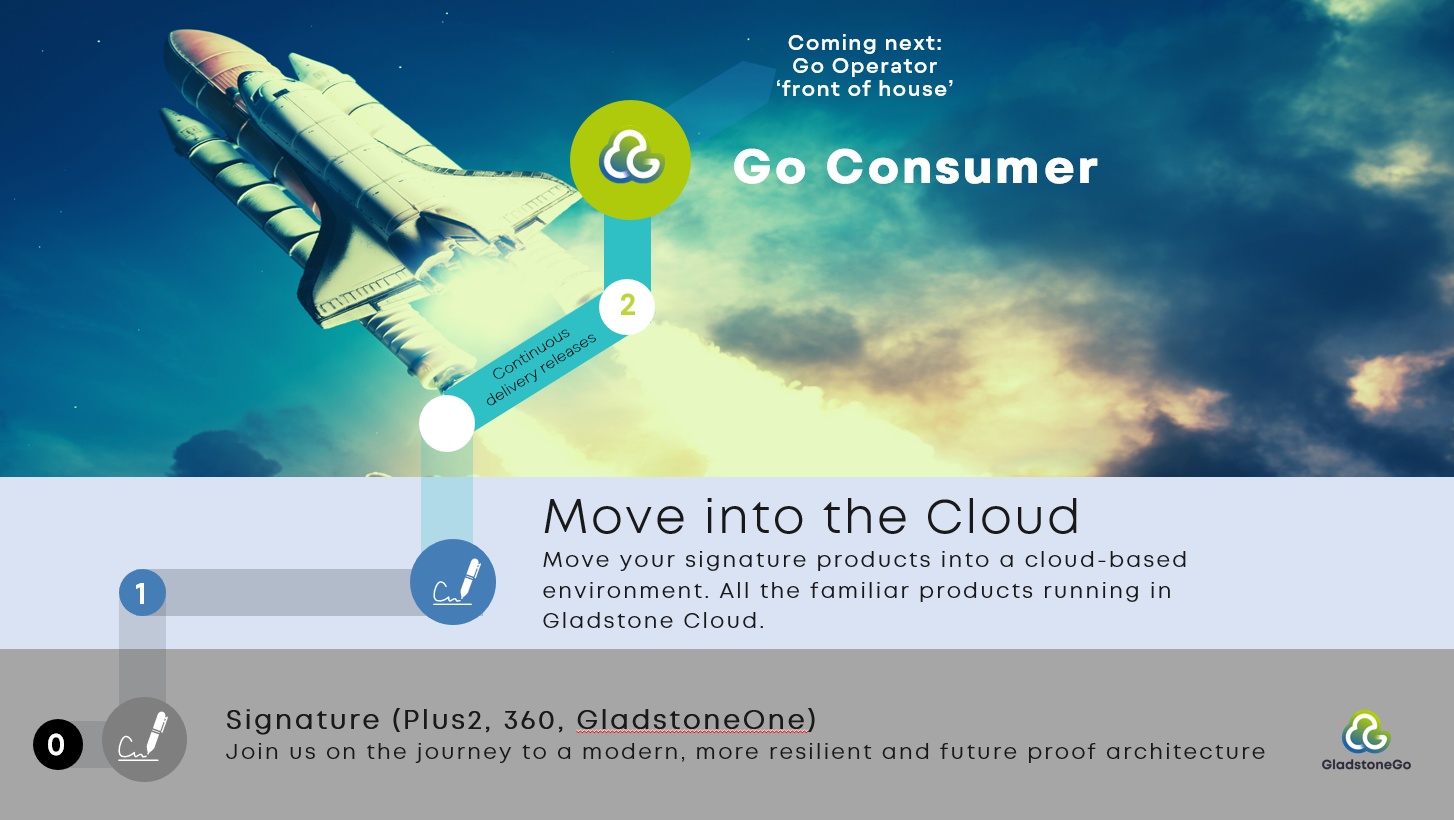Switch to Gladstone Cloud
What was once our 'hosted' solution for Signature products has become Gladstone Cloud! We have moved away from the hardware that once hosted our Signature software to a more reliable cloud-based system in Azure, which also houses GladstoneGo.
Many organisations especially in local government are looking to consolidate and centralise services to reduce costs, gain efficiencies and create a shared services model to better support their citizens. In addition, there is increasing focus on sustainability and green credentials. Managing and operating disparate server infrastructures for business applications across an estate can be costly. Managing an on-premise infrastructure hampers your IT team’s performance by spending too much time keeping the lights on, managing software versions and daily operations. For your infrastructure to deliver maximum business value, you need to continually manage and optimise it.
Moving your LMS to a cloud-based environment provides operators with many benefits:
- Scalable – the scalable servers with adaptive monitors will scale automatically to cover peak times. This means that peaks in server traffic such as common midnight peaks will never be an issue.
- Up to date – your software will always be on the latest version so there’s no need to request upgrades, they just happen
- No downtime – upgrades happen within minutes not days and there’s no disruption whilst your software is being upgraded
- Optimum performance – you’ll get the performance you need with advanced caching and the immediate benefit of any application performance changes we put in place
- Secure – enhanced security protects your data from a range of web attacks, DDOS attacks and bots.
- Implementation of Gladstone Products becomes far more straightforward with no lengthy lists of pre-requisites.
- Removes the red tape that can be associated with allowing suppliers access to your in-house infrastructure for regular maintenance and support.
- Quicker support from Gladstone as there is no reliance on your IT teams to be available for remote access.
- Customers using Gladstone Cloud will always be on the latest version, as well as receiving patches and bug fixes first.
The next generation of Gladstone consumer software (read the blog) has been built in the cloud and is delivered via SaaS. The new modern architecture of GladstoneGo is not compatible with traditional on-premise databases, however on-premise databases can easily be migrated to Gladstone Cloud, meaning you're one step closer to GladstoneGo. And if you decide to take Go? Downtime during the migration is greatly reduced compared to migrating to Go from a different data centre so it’s worth upgrading to Gladstone Cloud to keep your options open.

Things to think about...
- How often are you having to update your in-house infrastructure/hardware, storage capacity and back-up systems? Moving to the cloud takes away the headache caused by running on out-of-date systems and keeping them patched and up to date with the latest versions.
- How secure is your current infrastructure? Consider how much it costs to keep your software and systems secure, particularly in a world where cyberattacks are becoming more sophisticated. If your software and systems are approaching end of life, you need to bear in mind that they may no longer be supported with updates and patches essential to keeping them secure. Eg. the Gladstone database is SQL, if your on-premise SQL server is still running 2008 RC2 there are some very real problems, for a start it's no longer supported or patched by Microsoft, extended supported ended July 2019 – this opens your operation up to very severe security vulnerabilities, that goes for desktop operating systems too, there should be no Windows XP in your estate, anywhere! IT departments need to start planning for end of life of Windows 7 – extended security Yr 3 ends January 2023.
- How much does it cost to run your systems on-premise? Your business will also be incurring costs for heating, air-conditioning, insurances and digital security too – all of which will be alleviated or removed by moving to the cloud.



